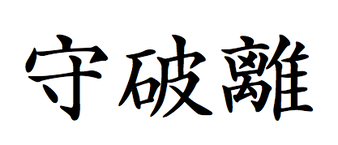 The sequence "Do, Defer, Delete, Delegate", also called the 4D strategy, is a common time management strategy that is used to prioritize and organize tasks. The idea behind this strategy is to help people decide which tasks to tackle first, and which tasks can be postponed, eliminated, or delegated to others. Here is a brief explanation of each step in the sequence:
Overall, the "Do, Defer, Delete, Delegate" sequence can be a useful tool for prioritizing and organizing your tasks, and for making the most of your time. By following these steps, you can ensure that you are tackling the most important tasks first, and that you are not wasting time on tasks that do not add value.
0 Comments
 The Pomodoro Technique is a time management method that involves breaking work into short, focused intervals, separated by short breaks. This technique is based on the idea that frequent breaks can help to improve concentration and productivity. The Pomodoro Technique is important because it can help people to stay focused and avoid getting distracted by unrelated tasks or interruptions. By working in short, focused intervals, people can avoid getting bogged down in tasks that might otherwise take up too much time. Additionally, the frequent breaks built into the Pomodoro Technique can help to reduce fatigue and improve mental clarity, which can make it easier to maintain focus and avoid burnout. Overall, the Pomodoro Technique can be a valuable tool for improving productivity, time management, and work-life balance. The Pomodoro Technique is a time management method that was developed by Francesco Cirillo in the 1980s. It is based on the idea that frequent breaks can help to improve concentration and productivity. The Pomodoro Technique involves working in short, focused intervals, separated by short breaks. These intervals are called "pomodoros," and they typically last for 25 minutes, followed by a 5-minute break. After four pomodoros, a longer break of 15-30 minutes is taken. To use the Pomodoro Technique, you can follow these steps:
The Pomodoro Technique can be useful for a wide range of activities, including individual tasks, meetings, and even entire projects. It can help you to stay focused and avoid getting bogged down in tasks that might otherwise take up too much time. Additionally, the frequent breaks built into the Pomodoro Technique can help to reduce fatigue and improve mental clarity, which can make it easier to maintain focus and avoid burnout.  A written to-do list can be helpful for a number of reasons. First, it provides a clear and concise overview of the tasks that you need to complete, which can help you to prioritize your work and stay organized. This can be especially helpful if you have a lot of tasks to manage or if you are working on a complex project with multiple components. Second, a written to-do list can help you to stay focused and avoid getting distracted by unrelated tasks or activities. By having a clear plan for what you need to do, you can avoid getting sidetracked by unimportant tasks or interruptions. Third, a written to-do list can provide a sense of accomplishment and progress. As you complete each task, you can cross it off your list, which can help to motivate you and keep you moving forward. Overall, a written to-do list can be a valuable tool for managing your time, staying organized, and achieving your goals. It can help you to stay focused and productive, and to avoid feeling overwhelmed or stressed by your workload. To make a written to-do list, you can follow these steps:
It can also be helpful to use tools like checklists or task management apps to manage your to-do list. These can help you to stay organized and track your progress, and they can make it easier to share your list with others if needed.  Timeboxing is a time management technique that involves setting aside a specific amount of time for a particular activity or task. This time frame is called a "time box," and it provides a clear boundary for how long the activity should take. The idea behind timeboxing is to help people stay focused and avoid getting bogged down in tasks that might otherwise take up too much time. By setting a time limit for each task, people can prioritize their work and ensure that they are making progress towards their goals. Timeboxing can be useful for a wide range of activities, including individual tasks, meetings, and even entire projects. Timeboxing is important because it can help people stay focused and avoid getting bogged down in tasks that might otherwise take up too much time. By setting a time limit for each task, people can prioritize their work and ensure that they are making progress towards their goals. This can be especially helpful for people who struggle with procrastination or who find it difficult to balance multiple tasks and responsibilities. Additionally, timeboxing can help to prevent tasks from becoming overly complex or difficult to complete, by encouraging people to break them down into smaller, more manageable units of work. Overall, timeboxing can help to improve productivity, efficiency, and time management. To implement timeboxing, you can follow these steps:
It can also be helpful to communicate with coworkers and clients about your use of timeboxing, to ensure that they are aware of your schedule and expectations for task completion. This can help to prevent misunderstandings and ensure that everyone is working towards the same goals.  High performing leaders have high emotional intelligence, so it should come as no surprise than improving your emotional intelligence will make you a better leader. Goleman (1998) discovered when studying the competence models of 188 large, global companies, that 90% of the difference between star performers and average performers in senior leadership positions could be attributed to Emotional Intelligence factors rather than cognitive abilities. A 360-degrees leadership performance study of 358 managers assessed by more than 1400 participants within Johnson & Johnson, confirms that the highest performing managers have significantly more Emotional Intelligence than other managers (Cavallo & Brienza, 2001). The basic model of Emotional Intelligence has 5 components, of which 3 components relate to managing yourself and 2 relate to managing others. To manage yourself, you need self-awareness, self-regulation and motivation. To manage others, you need empathy and social skill (Henry, 2006). Your self-awareness is your ability to recognize and understand your moods, emotions and drives, as well as their effect on others. Self-regulation is your ability to control or redirect impulses and moods, and your ability to think before acting. Motivation is your passion to work for reasons that go beyond money or status, it’s what is often called intrinsic motivation. Empathy is your skill in understanding and treating people according to their emotional reactions. Your social skills are how proficient you are in managing relationships and building networks. (Goleman 1998, Henry 2006) You don’t improve emotional intelligence by reading a book, it requires a different type of learning (Goleman, 2016). And though it only takes 4 steps, improving your emotional intelligence is hard work and takes time:
Step 1: Ask for feedback There are several questionnaires, some 360°-based, to evaluate your emotional intelligence. But even without these quantitative questionnaires, you could easily ask a few of your colleagues to answer five questions about you to give you already a qualitative insight:
Step 2: Choose 1 domain to work on Improving can be hard work, and you will get a better grip on this if you focus on just one domain at a time. There are different ways to approach this, but 2 of them really stand out:
Step 3: Develop a learning plan This is the most challenging step, because it is very idiosyncratic. There is no recipe book for what to do precisely. It’s clear that if you would want to increase your self-awareness, that assessing your emotions on a regular basis will help. Or that taking deliberate pauses before action will increase your self-regulation. Here are some tips to set up your learning plan.
Step 4: Practice, practice, practice It’s obvious that practice is an essential activity when you want to change habits. It’s important to integrate this practice in every aspect of your life, and to combine it with your journaling. The benefit of keeping a daily journal is that your practice will become more effective and it reduces the chances of practicing the wrong or unproductive habits. Making use of a coach can make this learning process even more effective. A good coach can help you starting from the first step. He can help you set up a more complete feedback questionnaire, support you in your choice of domain to work on and develop a learning plan together with you. When you practice a new habit, a coach can follow you in your development, keep you on the right track and support you in developing different exercises as you evolve in your skills. Improving your emotional intelligence requires effort and takes time, but it’s a path worthwhile taking, certainly if your job has important emotional components. Talentsmart found that people with a high degree of emotional intelligence make an average of $29,000 more per year compared to people with a low degree of Emotional Intelligence. That is worth an investment. References Cavallo K. and Brienza D. (2001). Emotional Competence and Leadership Excellence at Johnson & Johnson: The emotional Intelligence and Leadership Study. Consortium for Research on Emotional Intelligence in Organizations: http://www.eiconsortium.org/reports/jj_ei_study.html (accessed January 2nd, 2019) Goleman, D. (1998) ‘How to be become a leader’, in Henry (2001). Creative Management, 2nd edn, London: Sage. Goleman D. (2016). Five steps to increase emotional intelligence. https://www.linkedin.com/pulse/five-steps-develop-emotional-intelligence-daniel-goleman/ (accessed on January 2nd, 2019) Henry J. (2006). Creativity, cognition and development. Milton Keynes: The Open University Unknown (unknown). About Emotional Intelligence. Talentsmart: http://www.talentsmart.com/about/emotional-intelligence.php (Accessed on December 27th, 2018)  In martial arts, there is a concept that is called Shu Ha Ri, this concept refers to three different levels of mastery. The Shu state is about learning the rules and forms, which you repeat until they are a part of you. You don't deviate at all from the rules and forms, and everything you do is about being as precise as possible in applying them. Or as George W. Loomis already knew in 1902: "Amateurs practice until they get it right; professionals practice until they can't get it wrong." Once you master the rules and forms you naturally move in the Ha state. In the Ha state you experiment and innovate with the rules and forms. You try new things, some for better and some for worse. That is possible because you have developed your ability to notice improvement in efficiency and effectiveness, and maybe some elegance too. The highest form of mastery is the Ri state, in which you can let go of the rules and the forms. Your practice and experience has brought you to the essence of those rules and forms, which makes them irrelevant for you. You are free to innovate and experiment within full understanding of the meaning of whatever your mastery is about. Now the real learning can begin. |
AuthorMarc Innegraeve, executive and team coach Archives
January 2023
Categories |

 RSS Feed
RSS Feed